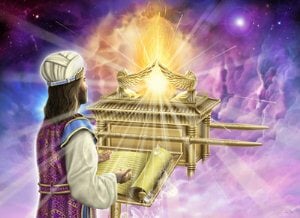Sunday: The Heavenly Sanctuary: Part 1
Fundamental Belief No. 24 opens with the following words:
“There is a sanctuary in heaven – the true tabernacle which the Lord set up and not man” (see Heb. 8:2). One of the matter-of-fact assumptions of the Bible is the existence of a heavenly sanctuary (Ps. 11:4).
Read Hebrews 8:1-5. What is the main point taught in these verses?
The earthly sanctuary is portrayed as a type, or pattern, of the heavenly; this means that, at a minimum, the former has some functional correspondence with the latter. The earthly sanctuary, then, teaches us a lot about the heavenly; this, despite that whatever the earthly sanctuary meant to the people of Israel, its true significance was found in the heavenly and what was to happen there. Through the efficacy of sacrifices and priestly ministry, the earthly model taught us about the realities of the heavenly sanctuary. The ministrations of the earthly sanctuary were God’s means of teaching the principles of salvation to His people, a foreshadowing of the ‘real thing’ – which is Christ’s ministry (Heb. 9:9-15), both through His death and then intercession in the heavenly sanctuary.
Ministry in the earthly sanctuary taught that while the shedding of blood was necessary (Heb. 9:22) to atone for sin, there was still the need for a priestly mediator between sinners and a Holy God as a result of that shed blood. The ministry of the priest in the Most Holy Place cleansed the sanctuary of sin and required affliction and repentance on the part of the people. Thus, judgment also was highlighted as an integral part of the total ministry of salvation.
What is fascinating, too, is what Hebrews 8:1 and 2 say, which is that the goal of all the previous seven chapters in the book is to point the reader to the reality of the heavenly sanctuary and the position of Christ as our High Priest in that heavenly sanctuary. It’s hard to understand how anyone could not see the great significance Hebrews gives to Christ’s ministry in the heavenly sanctuary as part of the entire plan of salvation. Nothing in the verses indicates that the sanctuary in heaven, much less Christ’s ministry there, should be seen as metaphorical or symbolic. In fact, verse 5 makes it clear that the earthly sanctuary – a real structure with real priests and real sacrifices – was only a ‘shadow’ of the reality of what Christ is doing for us in the heavenly sanctuary.


I get the feeling when I look at it in detail the layout of the earthly sanctuary in type is the replica of actual heavenly sanctuary built by God’s own hands as it is according to the lesson. There is one entrance into the outer court and in here, the actual sacrifice takes place. Prior to Priest entering the inner court, he washes his hands and feet at Lava. He enters the inner court into the holy compartment where it contains table of show bread, seven candle sticks and alter of incense where the Priest burns a portion of the flesh from sacrificial lamb. He then enters the most holy place to sprinkle the blood on the mercy seat or the Ark of the Covenant.
The earthly High Priest played the role of Jesus’ role as heavenly High Priest mediating between people and God but more for the benefit of the people that He came and died for. The gospel of salvation is acted out in the sanctuary layout. Bible says (in Isaiah 66:1 & Acts 7:49) that heaven is God’s throne and earth is His footstool. In a close view, heaven and earth very much appears in the context of sanctuary. Outer court I see it as earth and inner court as heaven. From inner court, Jesus came out and offered as a sacrificial lamb at outer court and returned to the inner court and now, He is our heavenly High Priest.
The rituals carried out in the earthly sanctuary and the sanctuary itself wraps up the salvation message for sinners. His first coming fulfilled and type has met the anti-type and the culmination all these is His second coming.